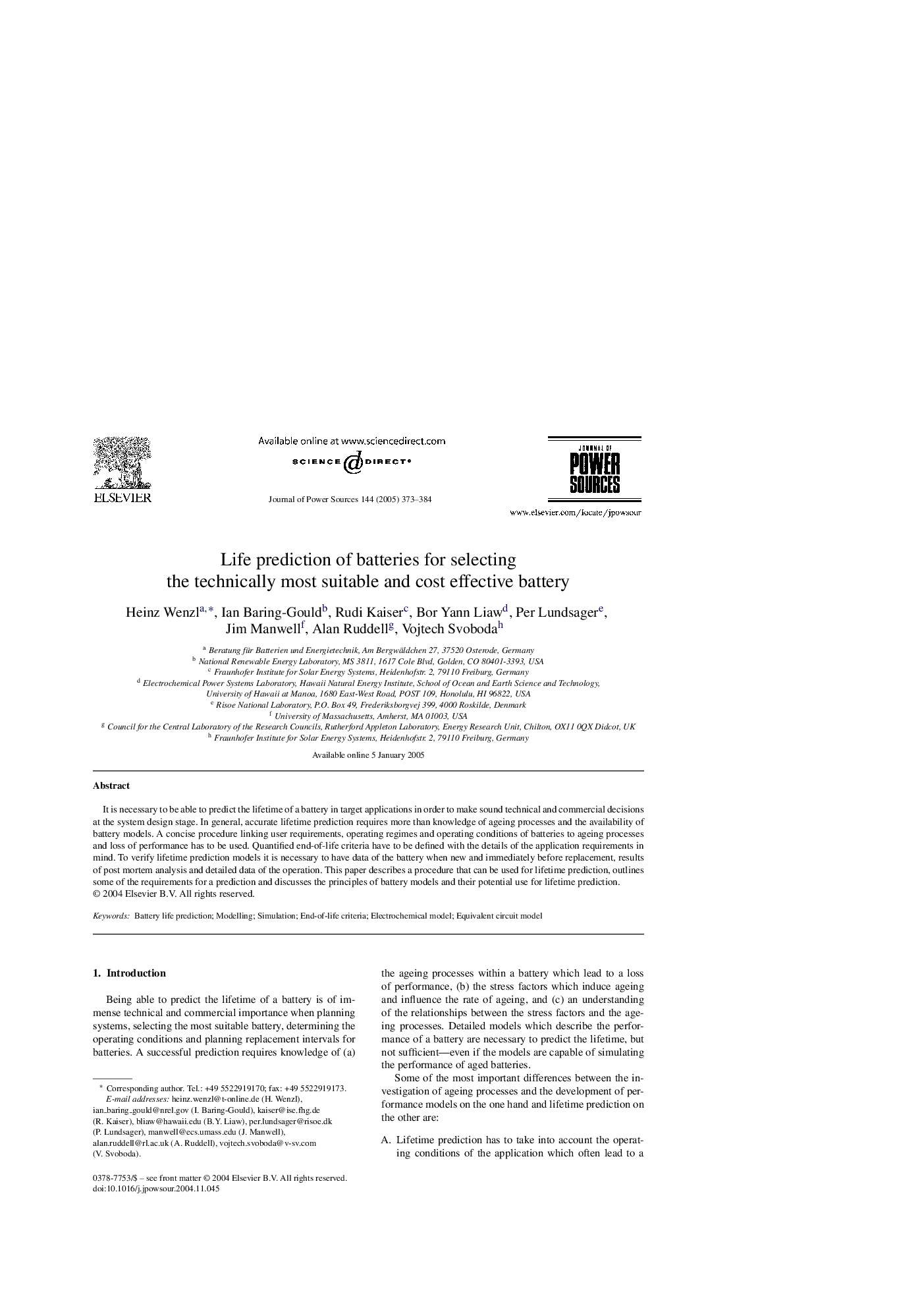| Article ID | Journal | Published Year | Pages | File Type |
|---|---|---|---|---|
| 10568065 | Journal of Power Sources | 2005 | 12 Pages |
Abstract
It is necessary to be able to predict the lifetime of a battery in target applications in order to make sound technical and commercial decisions at the system design stage. In general, accurate lifetime prediction requires more than knowledge of ageing processes and the availability of battery models. A concise procedure linking user requirements, operating regimes and operating conditions of batteries to ageing processes and loss of performance has to be used. Quantified end-of-life criteria have to be defined with the details of the application requirements in mind. To verify lifetime prediction models it is necessary to have data of the battery when new and immediately before replacement, results of post mortem analysis and detailed data of the operation. This paper describes a procedure that can be used for lifetime prediction, outlines some of the requirements for a prediction and discusses the principles of battery models and their potential use for lifetime prediction.
Related Topics
Physical Sciences and Engineering
Chemistry
Electrochemistry
Authors
Heinz Wenzl, Ian Baring-Gould, Rudi Kaiser, Bor Yann Liaw, Per Lundsager, Jim Manwell, Alan Ruddell, Vojtech Svoboda,
